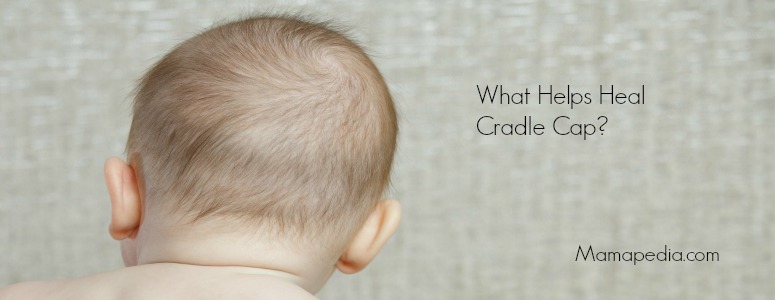
What Helps Heal Cradle Cap?
Anytime something out of the ordinary appears on your baby’s skin, it’s normal to worry — but there’s no need to panic if thick scales develop on your baby’s sweet-smelling scalp. It may just be a case of cradle cap, a very common rash among babies. We talked to Dr. Rebecca Dixon, a pediatrician with Riley Children’s Health in Indianapolis, about what to do if your baby develops cradle cap.
What Is Cradle Cap?
“Cradle cap is a rash that occurs on the scalp and is sometimes even seen in the armpits or behind the ears,” says Dr. Dixon. “It is technically called ‘seborrheic dermatitis’ and is a noninfectious skin condition seen in infants.” The rash causes white or yellow scales to form on the skin. In some cases, it looks like a mild case of dandruff; in others, cradle cap causes thick crusty scales to form.
Some parents confuse cradle cap with eczema, but they aren’t the same. Eczema can be itchy and painful, and while some babies outgrow it, others have eczema for years. By contrast, Dr. Dixon says, cradle cap isn’t itchy or painful, and it often goes away on its own. Experts don’t know exactly what causes this rash, but it’s believed that overactive oil glands may be responsible. Cradle cap is not caused by allergens, poor hygiene or anything else that you can control.
Treating Cradle Cap
Keep that shampoo handy. While some parents are nervous about washing skin affected by cradle cap, it can actually help break up the scales. “Start by shampooing with a mild baby shampoo and gently brushing the scalp with a soft brush to remove the scales,” Dr Dixon says.
Still seeing scales? Look no further than your own medicine cabinet to find a possible solution. “Petroleum jelly or ointments may also help to loosen the scales,” says Dr. Dixon. Rub a thin layer of petroleum jelly over the affected areas and use a clean, soft brush to slough off the scales. Wash the skin gently afterward, to remove any oily residue. Don’t use household oils like olive oil or baby oil, as they can make scales worse.
When to Seek Help
Most cases of cradle cap are totally harmless and go away on their own or in response to gentle shampooing and brushing. However, there are a few scenarios in which you should consult your pediatrician.
• The scales aren’t improving over time. Your pediatrician can suggest a stronger treatment, says Dr. Dixon. “They might recommend the use of an anti-dandruff shampoo or the application of a cortisone cream or lotion. These should only be used under the direction of a doctor.”
• The rash is spreading to areas where your baby doesn’t have hair, or it’s causing redness or hair loss.
• Your baby seems to be experiencing discomfort related to the condition.
• Your baby has a weakened immune system.
In some cases, what looks like cradle cap is actually caused by a different condition, so don’t ignore it if you have any concerns.
Kathryn Walsh is a freelance writer specializing in parenting and travel topics. Her work has appeared on mom.me, TheBump.com, and USAToday.com.